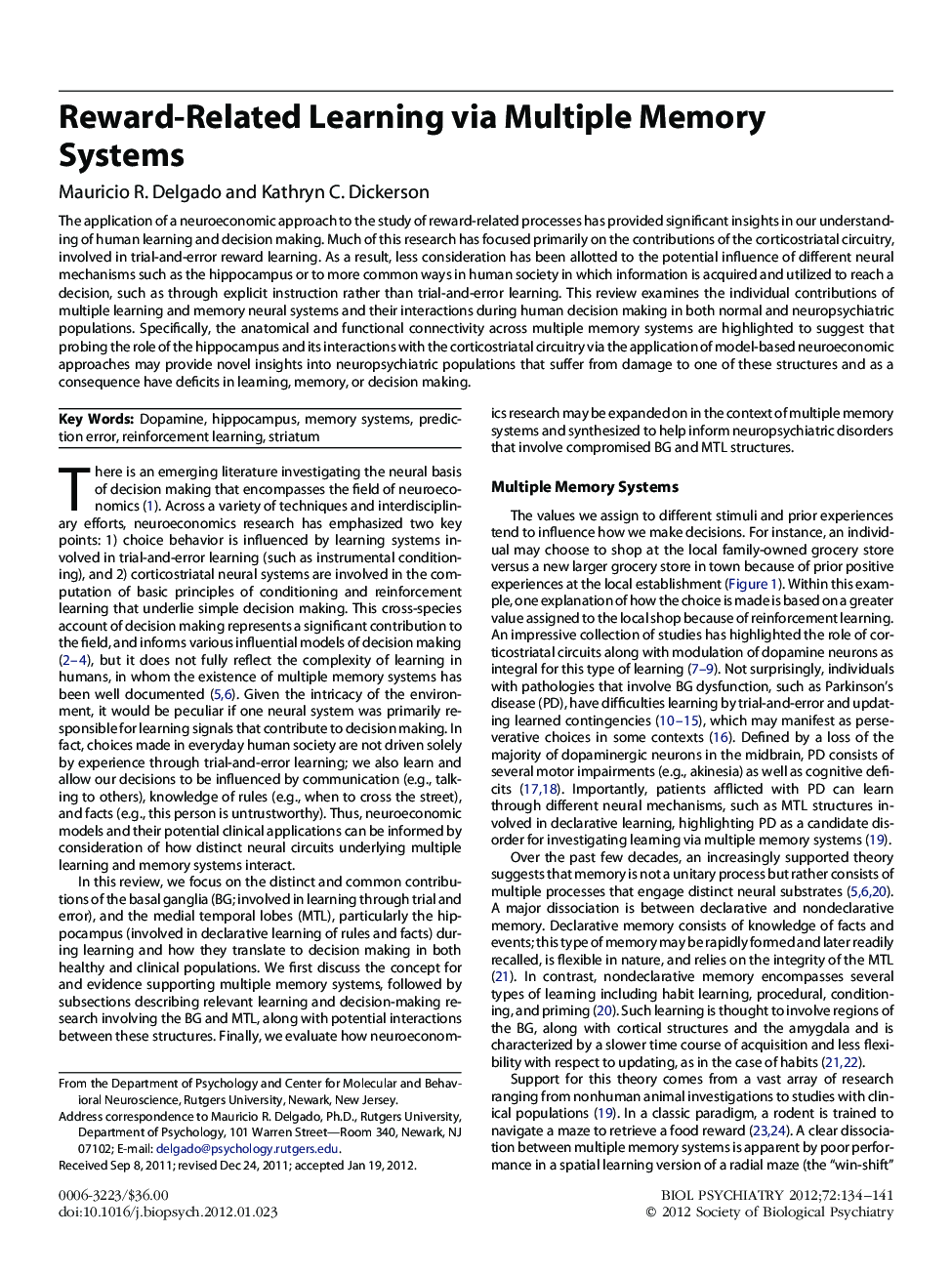| Article ID | Journal | Published Year | Pages | File Type |
|---|---|---|---|---|
| 4177948 | Biological Psychiatry | 2012 | 8 Pages |
The application of a neuroeconomic approach to the study of reward-related processes has provided significant insights in our understanding of human learning and decision making. Much of this research has focused primarily on the contributions of the corticostriatal circuitry, involved in trial-and-error reward learning. As a result, less consideration has been allotted to the potential influence of different neural mechanisms such as the hippocampus or to more common ways in human society in which information is acquired and utilized to reach a decision, such as through explicit instruction rather than trial-and-error learning. This review examines the individual contributions of multiple learning and memory neural systems and their interactions during human decision making in both normal and neuropsychiatric populations. Specifically, the anatomical and functional connectivity across multiple memory systems are highlighted to suggest that probing the role of the hippocampus and its interactions with the corticostriatal circuitry via the application of model-based neuroeconomic approaches may provide novel insights into neuropsychiatric populations that suffer from damage to one of these structures and as a consequence have deficits in learning, memory, or decision making.
